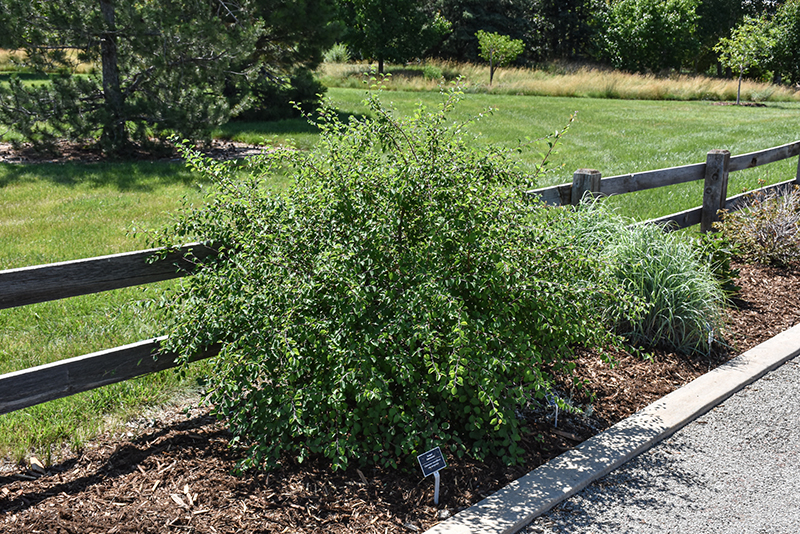Sungari Redbead Cotoneaster Cotoneaster racemiflorus var. soongoricus Height: 8 feet Spread: 8 feet
Sunlight:
Hardiness Zone: 3 Brand: Plant Select Description: An extremely hardy shrub, that features hanging racemes of stunning white flowers in spring and bright red fruit in late summer to fall; dark green foliage takes on bluish tones later in season; drought tolerant and resistant to most pests and diseases Ornamental Features Sungari Redbead Cotoneaster is primarily grown for its highly ornamental fruit. It features an abundance of magnificent cherry red berries from late summer to late fall. It has attractive dark green foliage with gray undersides and tinges of bluish-green which emerges coppery-bronze in spring. The fuzzy oval leaves are highly ornamental and turn an outstanding silvery blue in the fall. It features showy racemes of white flowers along the branches in late spring. Landscape Attributes Sungari Redbead Cotoneaster is a multi-stemmed deciduous shrub with a shapely form and gracefully arching branches. Its average texture blends into the landscape, but can be balanced by one or two finer or coarser trees or shrubs for an effective composition. This shrub will require occasional maintenance and upkeep, and is best pruned in late winter once the threat of extreme cold has passed. It is a good choice for attracting birds to your yard, but is not particularly attractive to deer who tend to leave it alone in favor of tastier treats. It has no significant negative characteristics. Sungari Redbead Cotoneaster is recommended for the following landscape applications; Planting & Growing Sungari Redbead Cotoneaster will grow to be about 8 feet tall at maturity, with a spread of 8 feet. It has a low canopy with a typical clearance of 1 foot from the ground, and is suitable for planting under power lines. It grows at a medium rate, and under ideal conditions can be expected to live for approximately 30 years. This shrub does best in full sun to partial shade. It is very adaptable to both dry and moist growing conditions, but will not tolerate any standing water. It is considered to be drought-tolerant, and thus makes an ideal choice for xeriscaping or the moisture-conserving landscape. This plant should not require much in the way of fertilizing once established, although it may appreciate a shot of general-purpose fertilizer from time to time early in the growing season. It is not particular as to soil type or pH. It is highly tolerant of urban pollution and will even thrive in inner city environments. This species is not originally from North America.![]()
![]()
![]()
![]()
![]()
![]()
![]()
![]()
![]()
![]()
![]()
![]()
![]()
![]()
![]()
![]()
Characteristics
Applications
Ornamental Features
This guide is an online resource representing many of the varieties that we carry over the course of the season, and is intended for informational purposes only. Inventory varies seasonally, so we cannot guarantee that every plant will be in stock at all times - please contact the store directly for current availability. It does not include our entire selection of plants, so be sure to visit our store to see varieties that may not be represented on this list.


